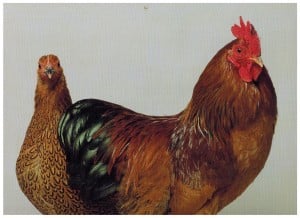Preparing for Poultry to Arrive

Raising poultry can offer many rewards – wholesome, home-raised eggs, enjoying the beauty of wide ranges of poultry breeds and types, and the unique, full personalities individual birds personify. If you’re ready to raise your own chickens, ducks or other poultry, we’re here to help.
Poultry comes in a variety of species, breeds, shapes, sizes and colors. Most families interested in eggs or meat choose chickens. But show birds, game birds, waterfowl and turkeys are becoming increasingly popular. The first baby chicks usually come in around January.
Click here for 2025 Baby Chicks
Chicken Coops and baby chicks !
Preparing for the Coop

Before you pick up your first birds, you need to prepare their new home. The needs and requirements will vary depending on the type of birds, number of birds and age you are starting them. Chicks need one to two square feet of floor space per chick during their first 6 weeks of age. Ducklings, goslings and turkey pullets will require more space due to their larger size. Read more:
Raising Chickens : Keeping chickens, weeks 2-3

With a clean brooder, fresh feed and clean water, your chicks are settled in and off to a good start by weeks two and three. It’s time to enjoy them. Chicks are very social and will provide hours of entertainment. You will see their unique personalities emerge as each day goes by and they will grow into mature chickens before you know it. Now, listen to them. Chicks will emit a soft cheeping sound when everything is right in their world. This sound can be used as a means of determining their comfort status. A chick that is stressed due to conditions being too hot or cold, wet litter, or one that is hungry or thirsty will have a shrill or higher pitched cheep or may cheep very rapidly. Read More:
Keeping chickens, weeks 4-5

Your babies are growing up! By weeks four and five, you begin noticing that your chicks’ fluffy appearance slowly disappears and their fuzzy down is replaced with feathers of a mature bird. Chicks will usually be fully feathered by 5 to 6 weeks of age. You also observe their wattles and combs growing larger and taking on a deeper red color. Read More:
Keeping chickens, week 6
Between 6 and 8 weeks of age, your chicks will be much larger and will need twice the amount of floor space they started with. It’s also time to start thinking about moving your chicks from the brooder to more permanent living quarters outside. If the temperature is mild and the chicks are fully feathered, they can be allowed outside during the day. Read More:
Keeping chickens, 3-7 months
Chickens become sexually mature between 4 and 6 months of age. With proper care and excellent nutrition the first egg is laid soon. You should still be feeding Purina® Start & Grow® Recipe to your birds. A layer diet should not be fed until 18 weeks of age because of the high calcium levels which are inappropriate for younger birds. Be sure to gradually transition the birds from the starter feed to the layer feed over 7 to 10 days.
Remember to always provide fresh water. Water is essential for healthy chickens, not to mention future egg production. As the weather gets warmer, they will drink more water so make sure they have access to a never-ending supply. Read More:
Healthy Flock
Poultry Environment: “Keep it clean, keep it dry”
Warm, dry housing without drafts is absolutely necessary. Clean and disinfect housing, feeders and waterers before chicks arrive. Disinfect regularly. Litter (bedding) should be 2″-5″ deep; use wood shavings, straw, etc. This will make certain that your birds get off to the right start. Make sure your enclosure (barn, coop or housing) also is predator proof.
Poultry Space Requirement: “No crowding allowed”
Chicks need approximately 0.8 sq. ft. of floor space per bird until 6 weeks of age. Increase this to 1.0 – 2.0 sq. ft. from 6 – 20 weeks, as they grow, depending on size of breed, outdoor run availability, temperature, etc. That’s about a 5′ x 5′ space for 25 chicks, double it at 6 – 8 months old. Read More:

